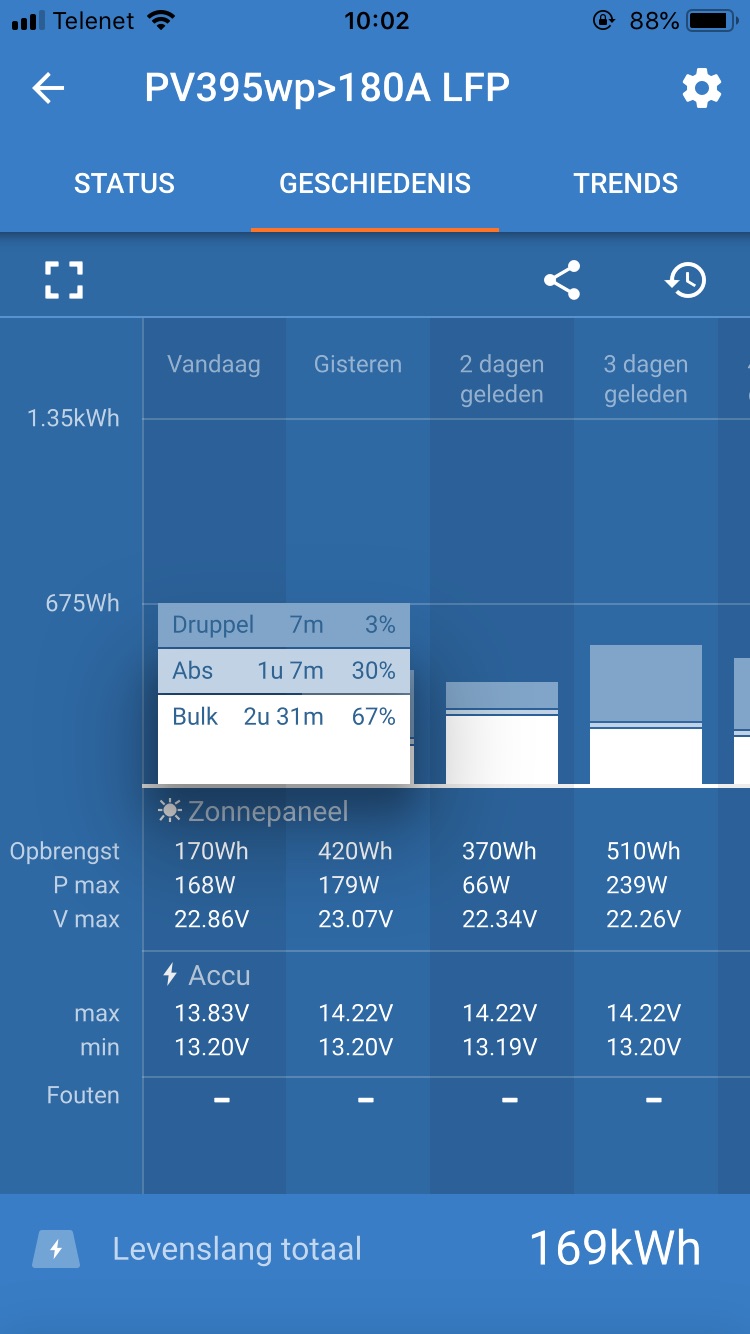Hi Victron friends
Have a 180Ah Lifepo4 from CS batteries and it has a built in "active" cell balancer.
On the camper roof 1 x 140Wp on MPPT 75/10 Smart and.. 2 x 110Wp + 1 x 175Wp on MPPT100/30 Smart
Both MPPT's are set to Lifepo4 but, I read at the bottom of the battery menu that the absorption time is 2h00 and "fixed".
If I look every day in the "history" I read "absorption time = 2h00...
If I understand correctly, the Lifepo4 is kept at 14.2v for 2h00...?
So I'm looking for an answer because a Lifepo4 doesn't need "absorption time" or am I wrong?
In the meantime, I have already set that absorption time to 0, once at 10 minutes 20 and also at 30 minutes
We have a lot of consumers, Nespresso, kettle, even induction via a 2Kw inverter, so the SoC goes from 100% every evening to 70 or sometimes to 65%
I bought this Lifepo4 for the "comfort" but I also want to treat them "correctly" and then it is about the lifespan
Since 2 days I have both MPPTs set to "adaptive" absorption
"loading" the Lifepo4 cells (unnecessarily) to 14.2v for a long time by continuing to use a "fixed" absorption time does not seem to me to be conducive to the lifespan, does it?
I can also set the absorption time to 0 because I also have a Victron IP22/30 and .... I can also use it every month when I am connected to shore power
The theme of "absorption" at Lifepo4 has been mentioned so many times
And we often read differing opinions...
But, what is actually the "best" way, taking into account that we use the Lifepo4 well every day (discharged)
Thank you very much for the responses
With best regards
Frank , Antwerp Belgium

 Dear all
Dear all